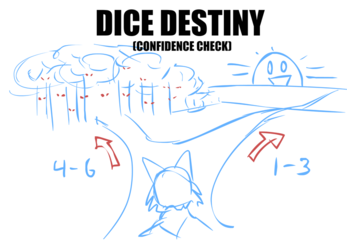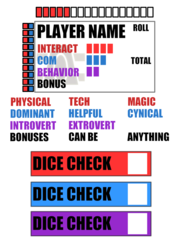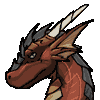Sign In
CloseGame Theory
Dice Checks
Player Creation
A very important aspect of any RPG is the setting; without it there is no place for the character to explore and nothing to interact with. This section is mostly for theory to help you set up basic scenarios.
First you need to decide what parts of the scenario are to be highlighted and make sure you funnel players towards that ultimate decision. Say you wish to present a city that the players will visit, but from the starting point of the town there's multiple paths they could use to reach it. They could take a road, or go through a forest, or travel along a river. This gives you three options leading to a central location. Furthermore, the party could get lost in the forest and find hidden ruins and that could be another path that could be taken. The normal road could have people you could meet that could ask things of the characters, or simply be something to help build personalities. The possibilities are endless, but it's important to keep the focuses of the comic in mind. Places might be important to display, or perhaps people is what you wish to present, or maybe the highlight is conflict and confrontation so you want the characters to get into battle quickly.
The more points of interest you wish to show, the less wandering options you should give the party. If you need to link four places of interest together in a linear fashion, do not provide more than 2-3 paths linking the points together, as you want them to follow that path. If you have no points of interest, then you can grow the story organically from a central location and see where the dice ultimately takes the story.
Splitting the group can be a way you can show the highlights of the idea you want to present, but keeping the flow of the story will be more challenging as the transition from one scene to another might be a bit jarring. There's several ways to go about it, as an example the second group goes off and the reader doesn't know what happens to them when they get back and tell the rest of the people what happened to them (might be a good idea to do the rolls in secret and/or in advance if this is the case), or keep track of both groups at the same time in a chronological sense.
If the focus is combat, then you'll only need to worry about the design of a single area; which means you can focus on the combat mechanics of the scene. High ground might provide bonuses, as well as cover. Traps and hazards could be potentially be added. Or perhaps it's a game that's instead being displayed and checks such as throwing, checking, blocking would need to be displayed. Your imagination is the limit, but keep in mind that with a comic you are trying to explore an idea; and that you should build your scenario around that idea, as opposed to gathering up people and hoping that the players will stumble upon that idea.
When having NPCs (non-player characters) interact with the group, it's probably best just to use stereotypes and make up stats on the fly as needed for the most part. The exceptions being if there's some characters you wish the party to meet specifically to talk to or fight with (They would count as points of highlights). As such those characters should have full fleshed out stats.
In the end the map and plot design of your comic is only as flexible as you want or need it to be. The overall goal is to present a stage that is your idea, and for other people to be the characters in it.
Submission Information
- Views:
- 1026
- Comments:
- 0
- Favorites:
- 2
- Rating:
- General
- Category:
- Visual / Other




